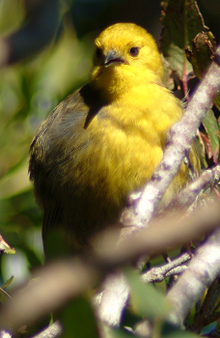
The Government is launching New Zealand’s largest-ever species protection programme, increasing the use of aerial 1080 to control pests and protect native wildlife.
Minister for the Environment Dr Nick Smith announced details of the ‘Battle for Our Birds‘ programme this week.
The programme will increase pest control in 35 forests to protect 12 native species, largely using 1080. These increases will see up to 500,000 further hectares of DOC land treated. The assault on predators such as rats and stoats is spurred by a projected increase in predator populations due to mast year — an event in which high beech tree seeding boosts predator numbers.
According to DOC, in 2000 a widespread beech mast and resulting predator plague wiped out the local mohua population in the Marlborough Sounds.
Further links include Dr Nick Smith’s full speech to the Nelson Rotary Club, maps of the targeted areas and more information on 1080 and mast events from DOC. Recent media coverage collated by the SMC can be found here.
The SMC collected the following expert commentary:
Dr Andrea Byrom, Portfolio Leader: Managing Invasive Weeds, Pests & Diseases, Landcare Research, comments:
“There is no doubt that pest numbers – particularly rats and mice – will explode this year (sometimes called an ‘irruption’) in response to the phenomenal mast (high seed production) year we are likely to experience throughout the South Island and parts of the North Island. In places that are not protected from predators, many of our iconic native birds, lizards, frogs, weta and snails will continue to decline. With the pest control plan outlined for the 35 sites around the country, these species will have a chance. In the short term, preventing the irruption will enable these species to successfully breed and thrive in the absence of pests during the next breeding season. In the long term, DOC’s proposed plan will prevent localised or even national extinctions of taonga species like mohua in high-priority areas.
“The planned drops will be enough to ‘hold the line’ and get a ‘pulse’ of breeding and recruitment through the coming year for native species in the targeted areas. After a 1080 drop, a few possums, rats, stoats and mice will survive, and their numbers will slowly begin to build up again over the next few years. DOC will very likely want to re-treat some areas when the next mast year occurs (usually 3-5 years’ time), again to prevent the pest irruptions. The science on this is very clear, although there are some differences between podocarp forests and beech forests in the way these species interact, which affects the timing of their future irruptions.
“In non-targeted areas with no 1080, there will be two kinds of impacts on our native fauna. There will be the direct impact of predation on the species I mentioned above. There is also the indirect impact of competition: the predators will chomp their way through the seeds, fruits and invertebrates that are food for native birds and lizards. The net result is a ‘step-wise’ decline in the areas that are not protected by 1080. Of course, there are a lot of passionate keen people out there doing pest control using ground-based methods, but these tend to be smaller areas compared to the larger areas that can be covered by aerial 1080.”
Associate Professor Alex James, School of Mathematics and Statistics, University of Canterbury, comments:
“This year is definitely a mast year. Mast years lead to large increases in predator numbers, in particular mice and rats which in turn lead to an increase in stoat numbers. Stoats are one of the biggest threats to native birds, for example a kiwi weighing less than 1kg cannot defend itself against a stoat. Without predators a mast year should lead to an increase in native bird numbers due to an increase in food. With predators a mast year will lead to a drop in bird numbers because the predator numbers increase so rapidly. In the long term, without intervention, native bird numbers will decrease during mast years.
“1080 aerial drops are our most effective control method so they will stop predator numbers increasing in the areas where they are being planned. The planned drops will be enough to reduce predator numbers enough to allow native species to use the mast year for their own benefit (just like it should be!).
“The science is very clear – the planned 1080 drops are the best way to manage the predator outbreak that will follow this year’s mast event.
“In areas without predator control we can expect to see significant decreases in native species numbers this year. Where the populations are already small (which is too many of our native species) the effect of this could be devastating.”